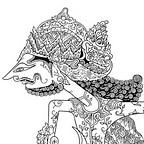Hanmaum Zen Center of New York
A Photo-Essay on the Korean Jogye Order & Daehaeng
Founded in Anyang, South Korea by Daehaeng Kun Sunim in 1972, the Hanmaum Seon Center (HSC) is a global organization and a member of the Jogye Order of Korean Buddhism, which is Seon (Zen) in orientation and the largest Buddhist order in South Korea. Beyond the 15 branches of HSC in South Korea, it has one branch each in Brazil, Canada, Germany, and Thailand, two branches in Argentina, and four branches in the United States. Its New York branch featured here, the Hanmaum Zen Center of New York, was founded in 1989.
Although Korean Buddhist traditions were historically influenced by Chinese Mahayana, Buddhist development in Korea has also followed its own particular path. Viewing foreign Mahayana as internally inconsistent, Korean monastics in the 7th Century pursued a holistic approach known as Tongbulgyo. Meaning interpenetrated Buddhism, this approach has focused on resolving discrepancies.
The Jogye Order arose in the late 11th Century due to competition from the Cheontae school, integrating the personal practices of Korean Seon with Pure Land Buddhism and Sutra theology. Jogye remained the united, representative order of Korean Seon until 1954, when it split between a faction of celibate monks, which retained the name of Jogye, and a mixed faction of celibate monks and married priests, which became the Taego Order, now the second largest Buddhist order. The split was further rooted in historical-political developments, as contemporary President Syngman Rhee (1948–60), seeking to split the Buddhist Sangha, rallied against “Japanized Buddhists” as married priests had been favored by Japanese occupation authorities.
Born in 1927 and having lived through a troubled family life, Daehaeng Kun Sunim became an ordained nun in 1950. She spent the next decade wandering South Korea, by her own words entrusting in everything around her and in her own Buddha-nature, which finally allowed her to know and understand her true self. In the 1960s, she moved and settled between various Korean cities, often approached by laypersons seeking her help for their personal problems.
Realizing that so many individuals were unaware of or unable to reach their own Buddha-natures, Daehaeng founded HSC in 1972 for the purpose of guiding others to listen to and activate their infinite inner selves. This was a profound shift, as Seon masters had traditionally taught only a handful of monks and nuns. HSC would thus help all laypersons, regardless of personal status or gender, find liberation from the bonds of Samsara and Karma, allowing them to help themselves and others without permanently relying on a Guru.
Daehaeng’s work reinvigorated interest in Buddhist practice, including among the youth. She became a major advocate for the advancement of nuns (Bhikkhunis), supporting the National Association of Bhikkhuni and nun colleges. When she passed way in May 2012, she was teacher to over 100 nuns, over 50 monks, and a formal lay membership of over 150,000.
These photos were taken on a single day exclusively utilizing a wide angle lens. Only the grounds and the exterior of the Temple were featured as photography of its interior is not permitted. Acknowledgments and gratitude go to the kind congregant and the two Center nuns for their warm welcome and gracious permissions, as the Temple is not fully oriented for regular visitors.
